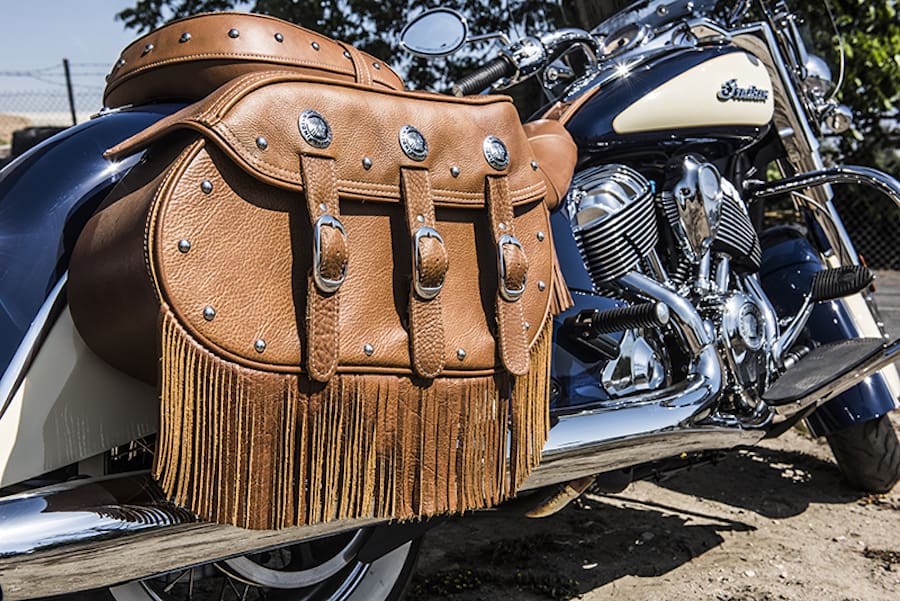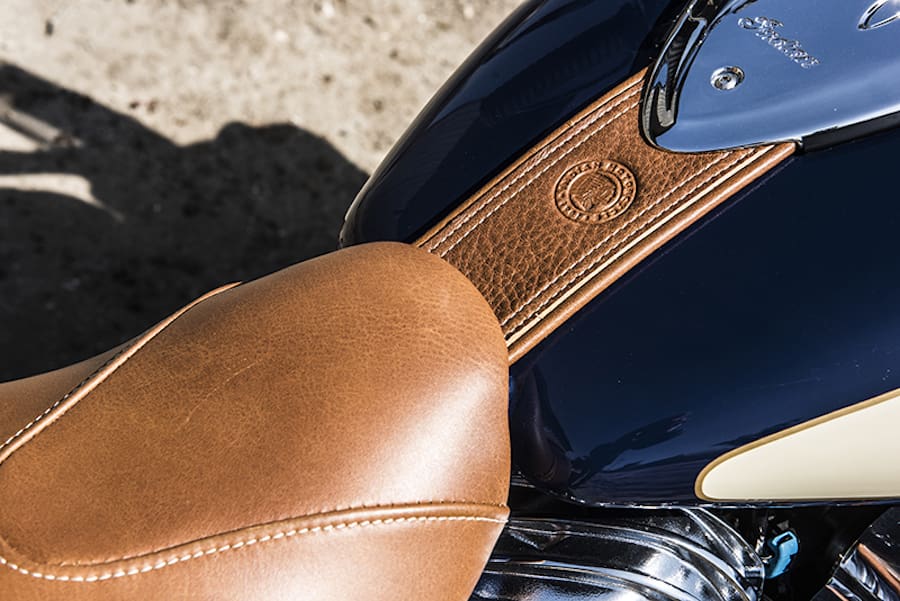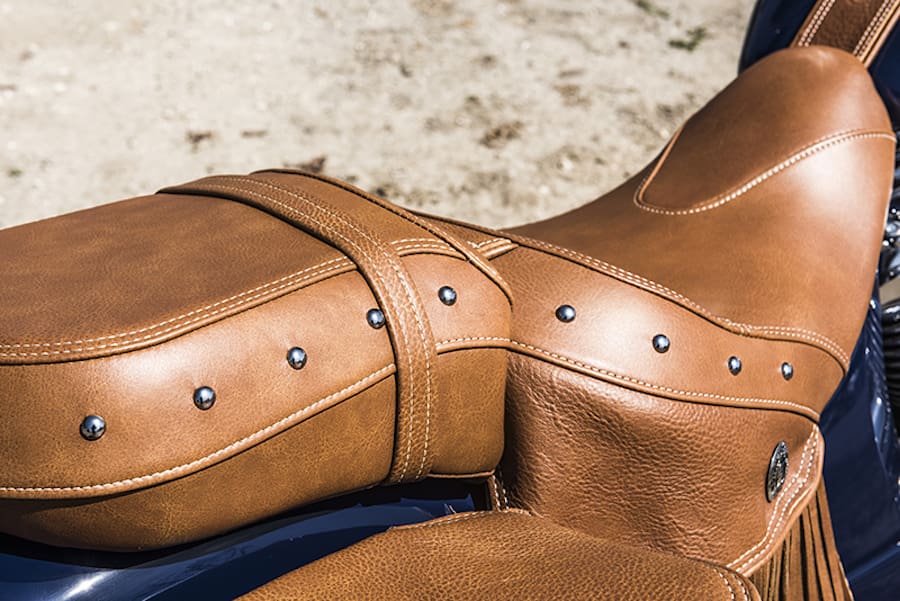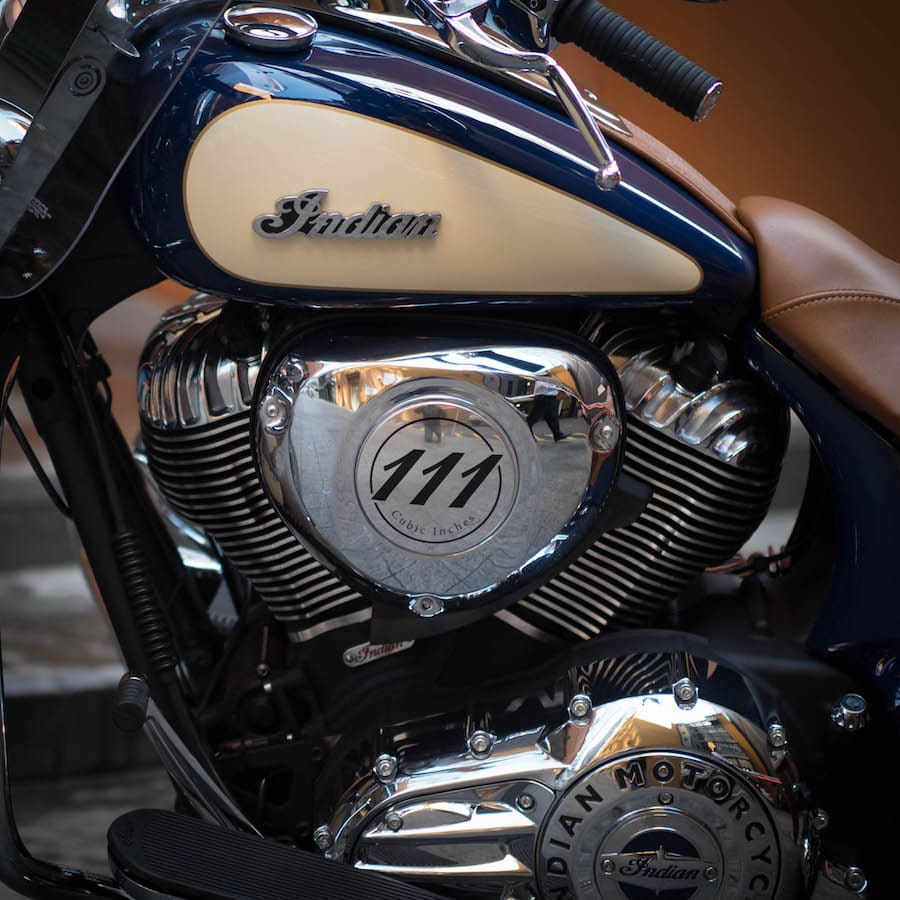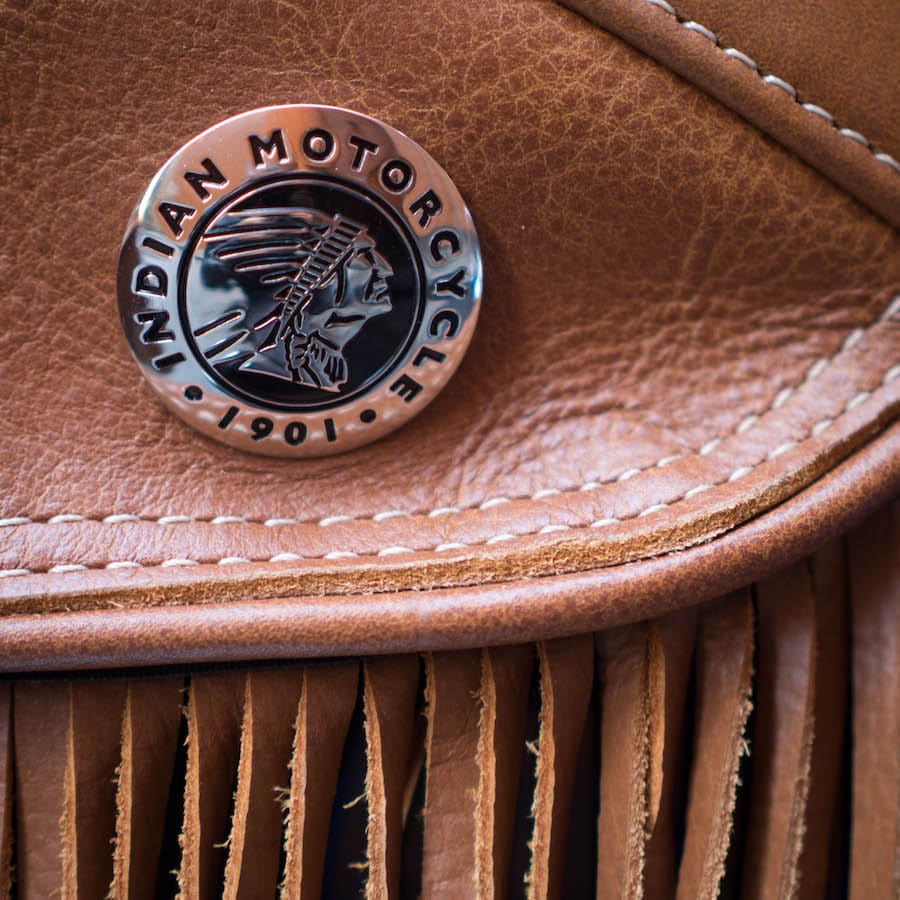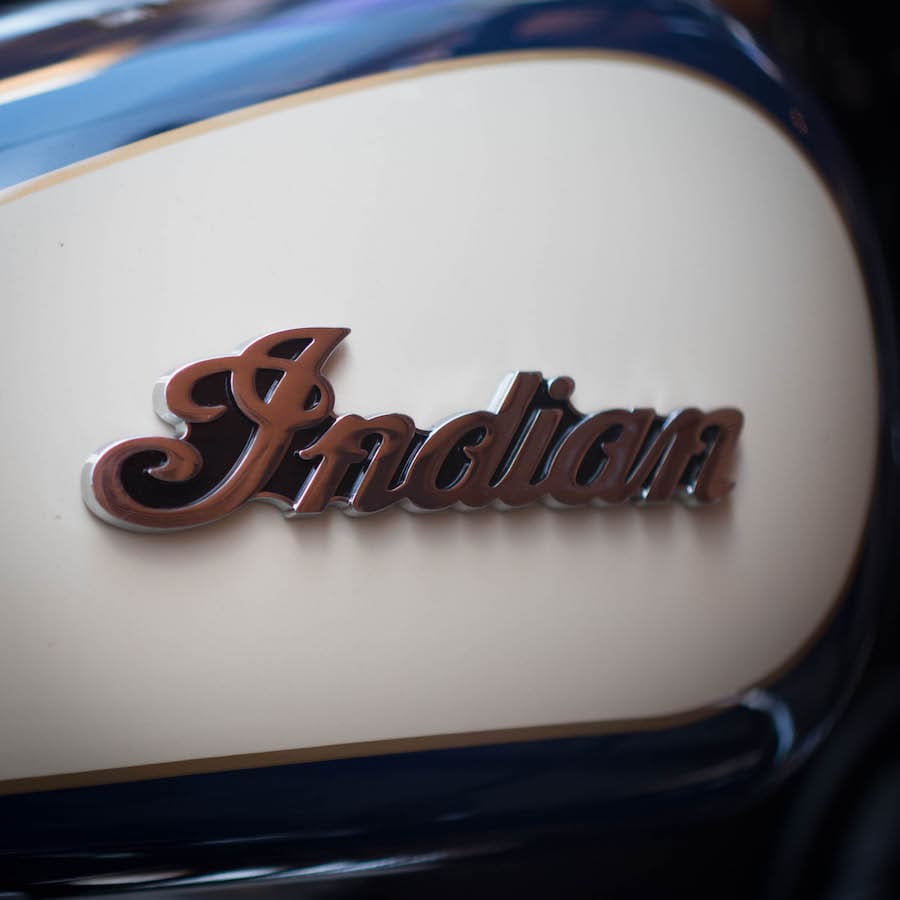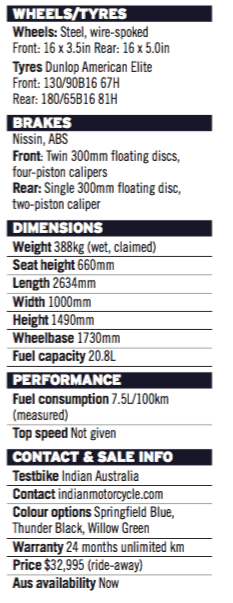If ever a bike deserved to have a movie made about it, it’s the Indian Chief Vintage.
‘Epic’ is my one-word description. This bike features tasteful old-school design cues, beautifully matched colours and faultless workmanship. I don’t think I have ever had so many photo requests from complete strangers in a two-week period.
While the 2017 Chief Vintage is drawing on a long-established model heritage (it’s been around since 1922), the current factory at Spirit Lake has put its own stamp on the bike with notable refinements from previous models, without losing touch with its roots.
Jumping on for the first time you can feel all of its 388kg, but also a confident balance. The clutch has a heavy weight as you kick the six-speed ’box into gear; in a world of quickshifters and auto-blippers, this gearbox has a very definite, solid, mechanical feeling.
This sums up the Chief Vintage well – it’s a superb mix of raw metal emotion combined with refined engineering.

The Thunder Stroke 111 mill is the centrepiece, a heavyweight packing 1811cc of air-cooled twin-cylinder grunt. That makes it bigger than you’ll find in most cars these days. When you roll the throttle on down low in the rev range, response is near instant, and the engine produces a guttural growl like a 1950s muscle car. I fell in love with that sound and rolled it on so many times. I never got sick of hearing it.
The ride itself is smooth as silk, as you’d expect from a belt drive, and the more deliberate my actions were, the better the bike responded. With 161Nm of torque available, you can short-shift and pull hard out of any gear, then just sit comfortably in sixth on the highway and forget the world.
That big screen up front is so effective you can almost ride without a helmet visor or glasses.
I rode the bike over both long and short distances, through perfect sunny days and unexpected storms at night and not once did the Chief flinch. At night the driving lights are like fireballs, but I did wonder why the switch was mounted forward near the windscreen and not on the ’bars.
Stability is a key feature of the handling. I’m 182cm tall and weigh about 80kg and wondered whether some people would find the ride on the firm side, but I did love the planted feel when cornering. The bike felt very neutral, with no oversteer or understeer and even weight distribution front to rear.
Braking stability was equally impressive.
Riding through some tasty Hunter Valley roads, an unexpected bonus was the ground clearance – it was a challenge to scrape out. Of course, my mates will read this and say, “Yeah, you’ve got to lean it over to scrape anything!” Thanks for that in advance…
When it comes to build quality, the Chief Vintage is at artisan level. As an American-made machine, the craftsmanship is under a lot of scrutiny to make sure it lives up to the hype, and this Indian doesn’t disappoint.
Chrome everywhere gives you that ‘no expense spared’ feeling, but it’s the leather saddlebags and seat that really catch the eye. The stitching is millimetre-perfect and the grain screams of high quality. The tassles divide opinion but they can be easily detached if you prefer – I wouldn’t. This is the kind of bike John Wayne or Lee Marvin would ride, and they’d own the frilly bits.
In fact, there’s not much at all you would want to change on the Chief. I’d be kind to the Thunder Stroke 111 and set it free by adding the Stage 1 Exhaust (it gives a much better note and presence across the rev range) and the air filter kit, which looks trick. Both let the engine breathe a little better for an added performance boost.
After two weeks of good times and being stopped in the street for photos, I not only loved the Chief Vintage but I was left genuinely impressed by Polaris as custodians of the Indian brand.
If you’re looking for a cruiser with a custom feel that will set you apart from the crowd, the Indian Chief Vintage is a must to test, even if it’s just to check my ground clearance claims.
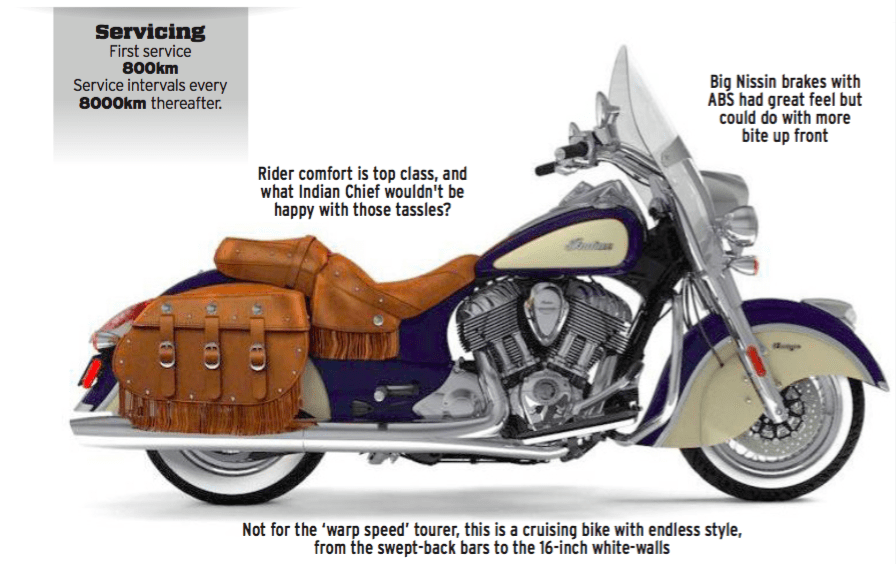
Pros
- Handling
- Styling/street presence
- Build quality
Cons
- Needs the exhaust kit
- Front brake bite
By Matt O’Connell
